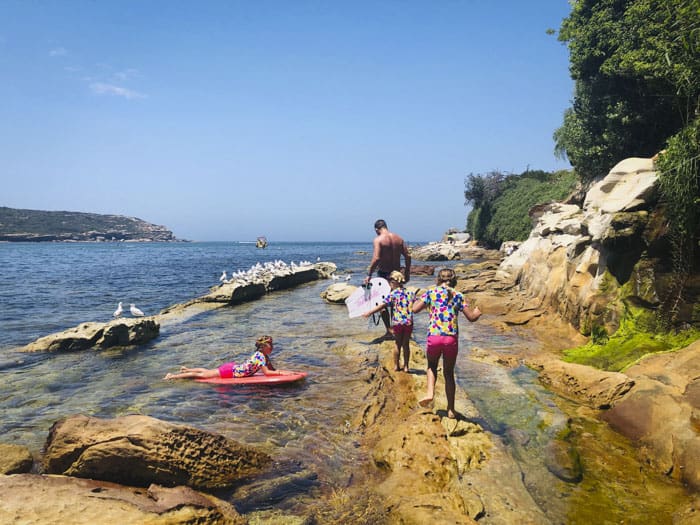150+ About Australia Fun Facts
Welcome, you are looking for fun facts about Australia and boy do I have a lot of them for you! There are hundreds of funny facts on this article and I also sell a terrific book which you can buy in paperback on Kindle – see bottom of the article.
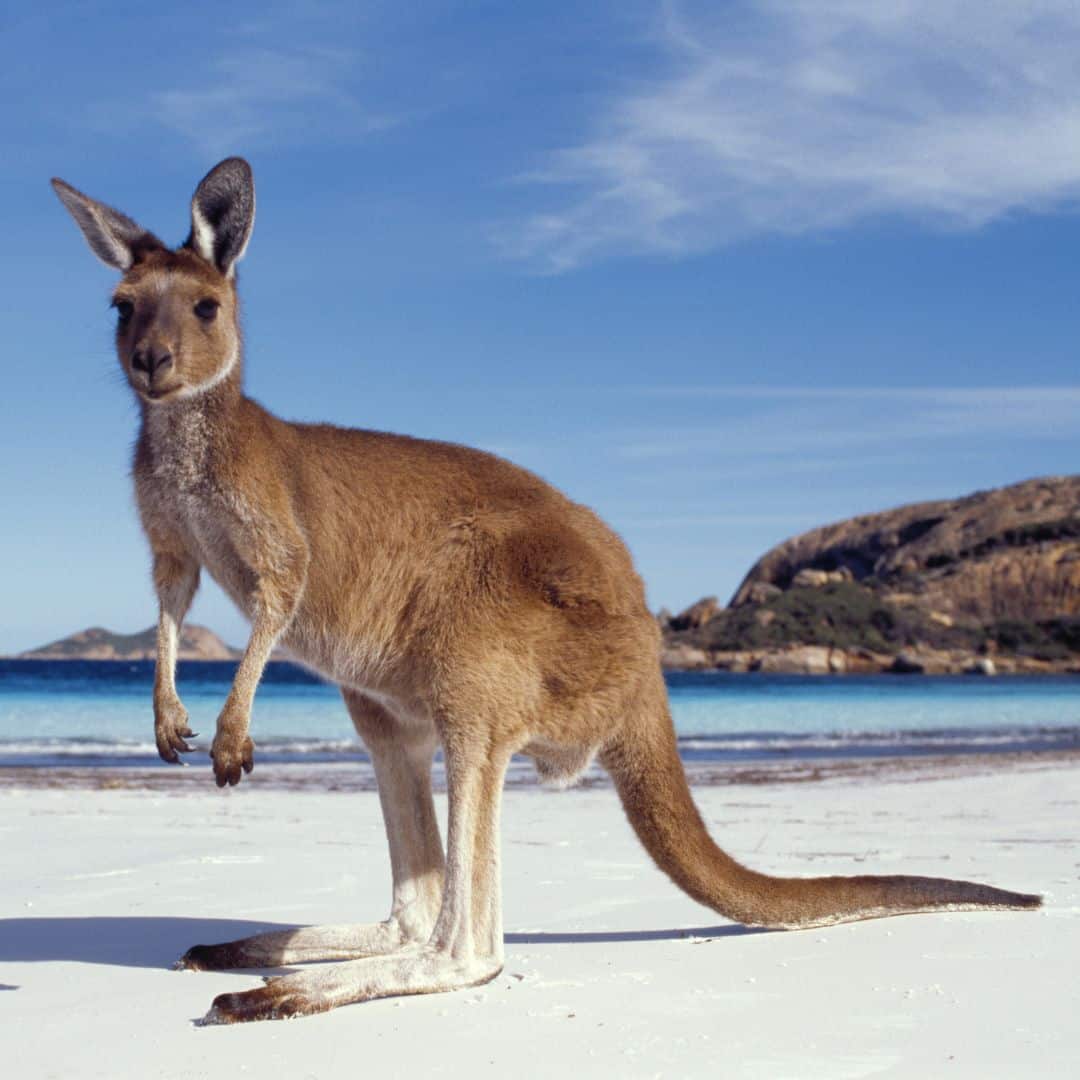
Australian Animals Facts
- Kangaroos and emus cannot move backwards easily. Whilst they physically can go backwards if absolutely necessary, they rarely do. They were used on the coat of arms for exactly that reason so symbolise constantly moving forward.
- By the way, most countries do not eat the animals which feature on their coast of arms, like the American eagle and the lion rampant in Scotland. But Australians eat do eat emu and kangaroo.
- We all know that kangaroos have pretty big feet! They belong to the family Macropodidae which literally means ‘big feet.’
- Western grey kangaroos are knowns as ‘stinkers.’ That’s because they have a strong body odour caused by the types of plants they eat.
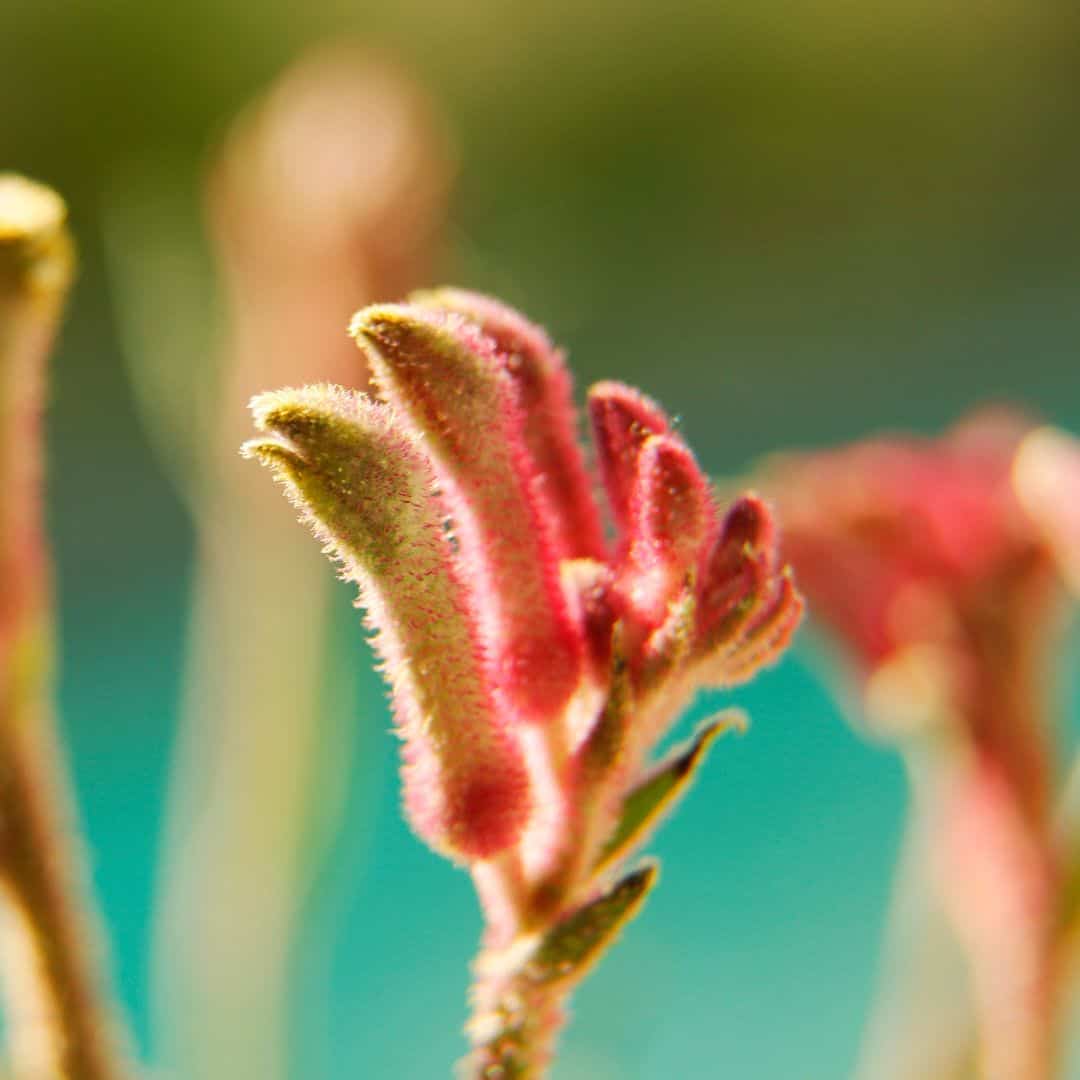
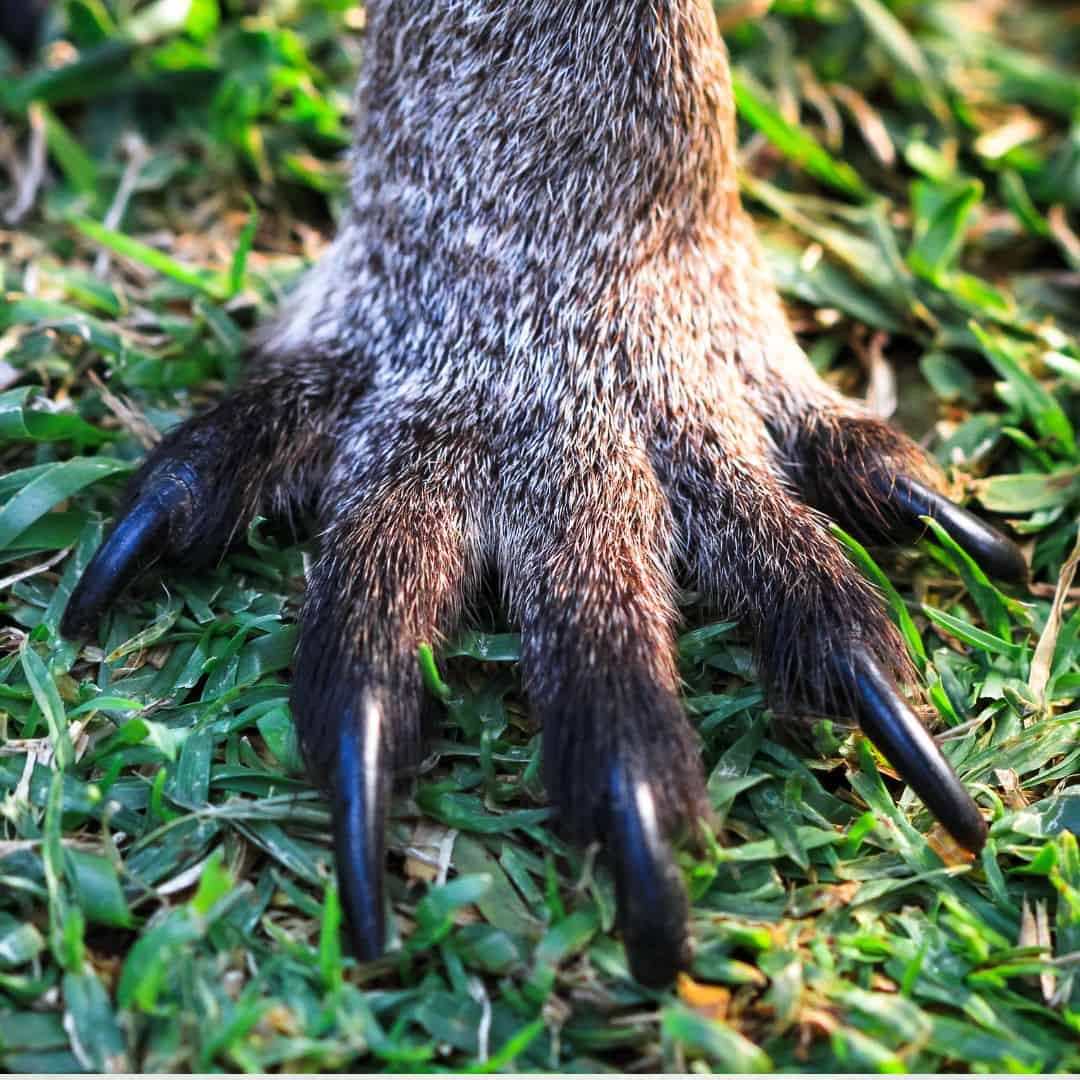
Funny facts of australia
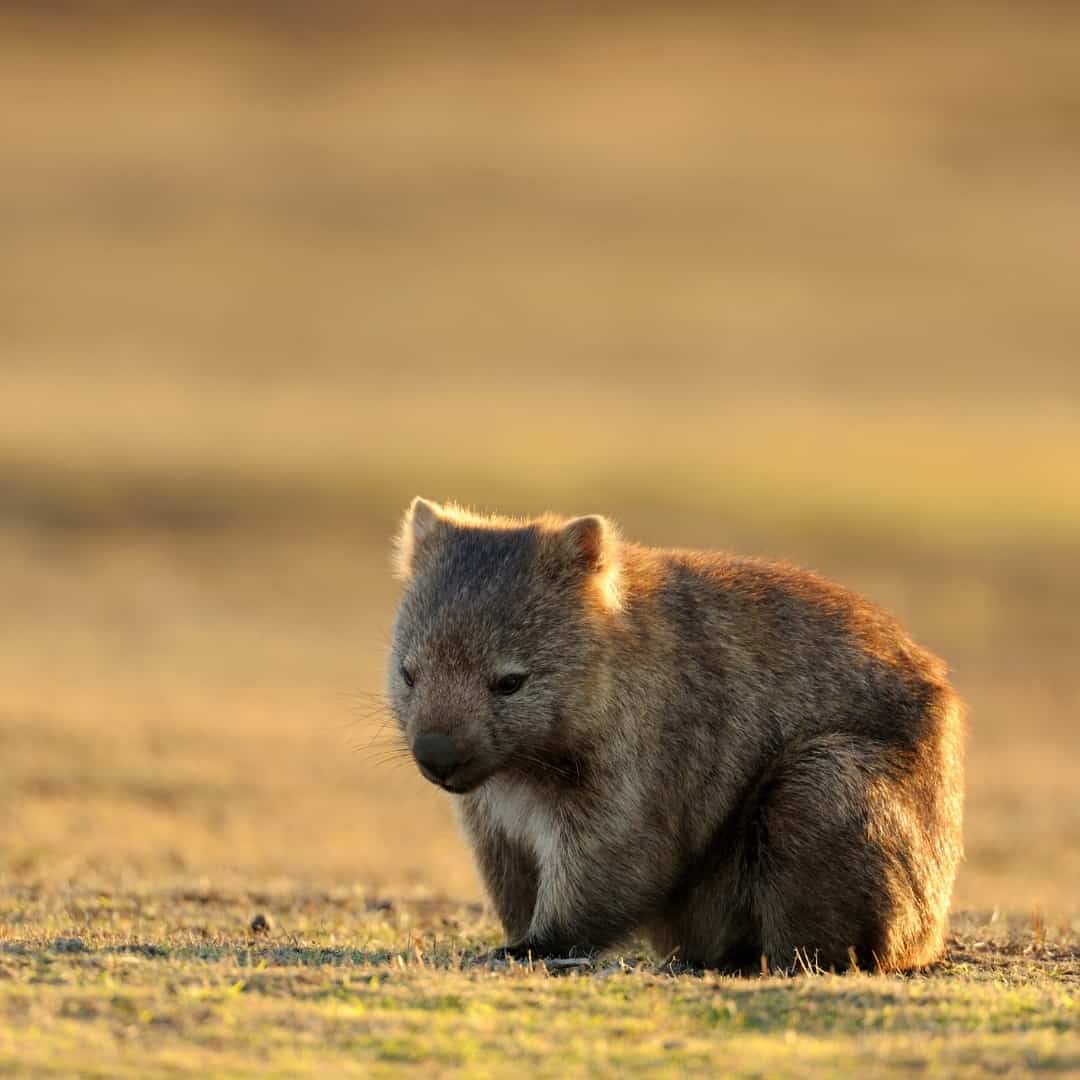
- Ever wondered why wombat poo is cubed? It’s so that the poo doesn’t fall off rocks but stays on top which aids in communication between wombats.
- Wombats have the largest brains of all marsupials.
- Wombats are great bluffers. When threatened they make loud hissing sounds and kick backwards like a donkey. In retreat, they dive headfirst into their burrow leaving their bum exposed. Thankfully its thick fur and skin is extremely tough!
- Wombats have tiny eyes and poor vision. They make up for it with excellent hearing and smell.
- Wombats are notorious for digging alternate exits to their burrows when traps are placed at the entrance. Clever wombats!
- The common wombat is nicknamed the ‘bulldozer of the bush.’
- The Tasmanian devil’s head and neck are so huge, they make up 25% of its body mass and give it an amazingly powerful bite. So beware!
- The deadliest marine animal in Australia is the box jellyfish.
- Saltwater crocodiles have roughly 68 sharp teeth and can exert two tonnes of pressure from a single bite. These crocodiles are found around the northern areas of Australia from Broome in Western Australia to Rockhampton in Queensland. There are more than 1000,000 saltwater crocodiles in the Northern Territory alone. So look out!
- Crocodiles kill at least one person every year in Australia, and sometimes more.
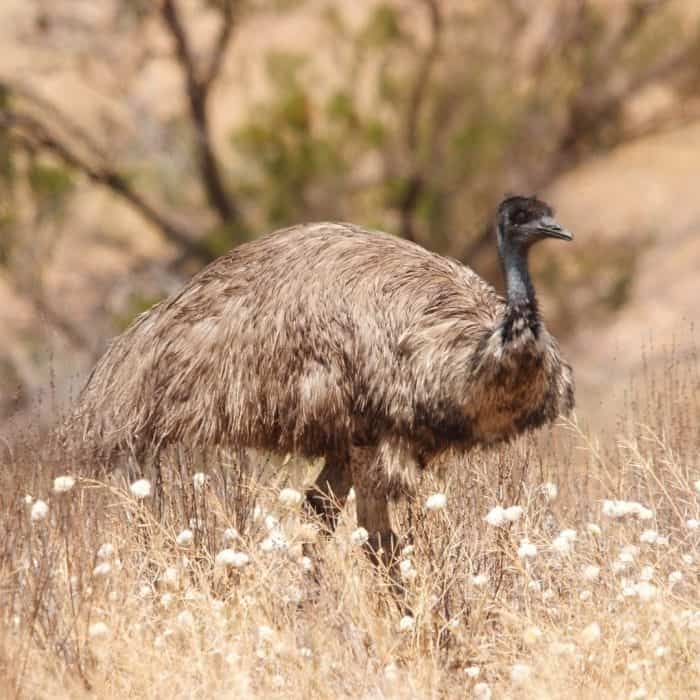
- Emus are huge flightless birds which have very tiny wings. When running at top speed emus do flap the wings, using them to help balance and change direction. They also flap their mini wings to help cool themselves down.In 1932, an ‘Emu War’ took place in Western Australian when a deployment of soldiers armed with Lewis Guns tried to reduce a population of 20,000 which was threatening he wheat crop. Despite many emus being killed in various battles the humans lost a war as emu numbers continued to rise.
- Believe it or not, when Saudi Arabia needs camels, Saudis buy them from Australia.
- Australia is a biodiversity hotspot with 200,000 species of plants, fungi, animals, fish, insects and other organisms already named. But taxonomists believe that they have only discovered 30% of the species in Australia so far. So there is plenty of work for scientists to get on with!
- The annual Australian Day Cockroach Races held at the Story Bridge Hotel in Brisbane are a popular event, featuring a steeplechase and a sprint for the cockroach participants.
- The Tasmanian Devil has a jaw strength similar to a crocodile, but its jaws are much smaller!
- As far as mammals go, the koala has the smallest brain in proportion to its body size.
- Cathedral termites in the Northern Territory, Western Australia and Queensland build mounds up to eight metres in height, though most that you will see when travelling in the Northern Territory are around three metres high.
- A termite colony can have between a few hundred to a few million termites and the queens can live up to 50 years.
- Magnetic termite mounds are only found in the Northern Territory. The mounds are mysteriously aligned north-south to the earth’s magnetic field.
- Australian termites are known to have evolved from cockroaches.
- The Australian magpie is a skilled mimic and can copy the songs of around 35 other bird species and even some horse and dog noises.
- There are more than 140 species of land snakes and 32 species of sea snakes in Australia but don’t worry, of the 100 snakes that are venomous only 12 species can kill humans. Did you know that snakes flick out their tongues so that they can detect chemicals in the air which helps them to track prey?
- Female flies are the ones that drive you crazy. They seek humans in search of proteins that they need to make eggs. The sweat on human bodies is an ideal source.
- Camels are not native to Australia, yet Australia has the largest number of feral camels worldwide with over one million of them roaming around.
- There are more than 2,000 species of spiders in Australia. Thankfully only a handful are dangerous!
- Australian spiders might look hairy, but these are not real hairs. They are actually sensory setae which spiders use to collect information about their surrounding environment.
- There are more kangaroos and sheep in Australia than there are people.
- Quokkas are considered the friendliest animal in the world and can only be found in Western Australia.
- Female quokkas will expel their offspring from the pouch when threatened by predators.
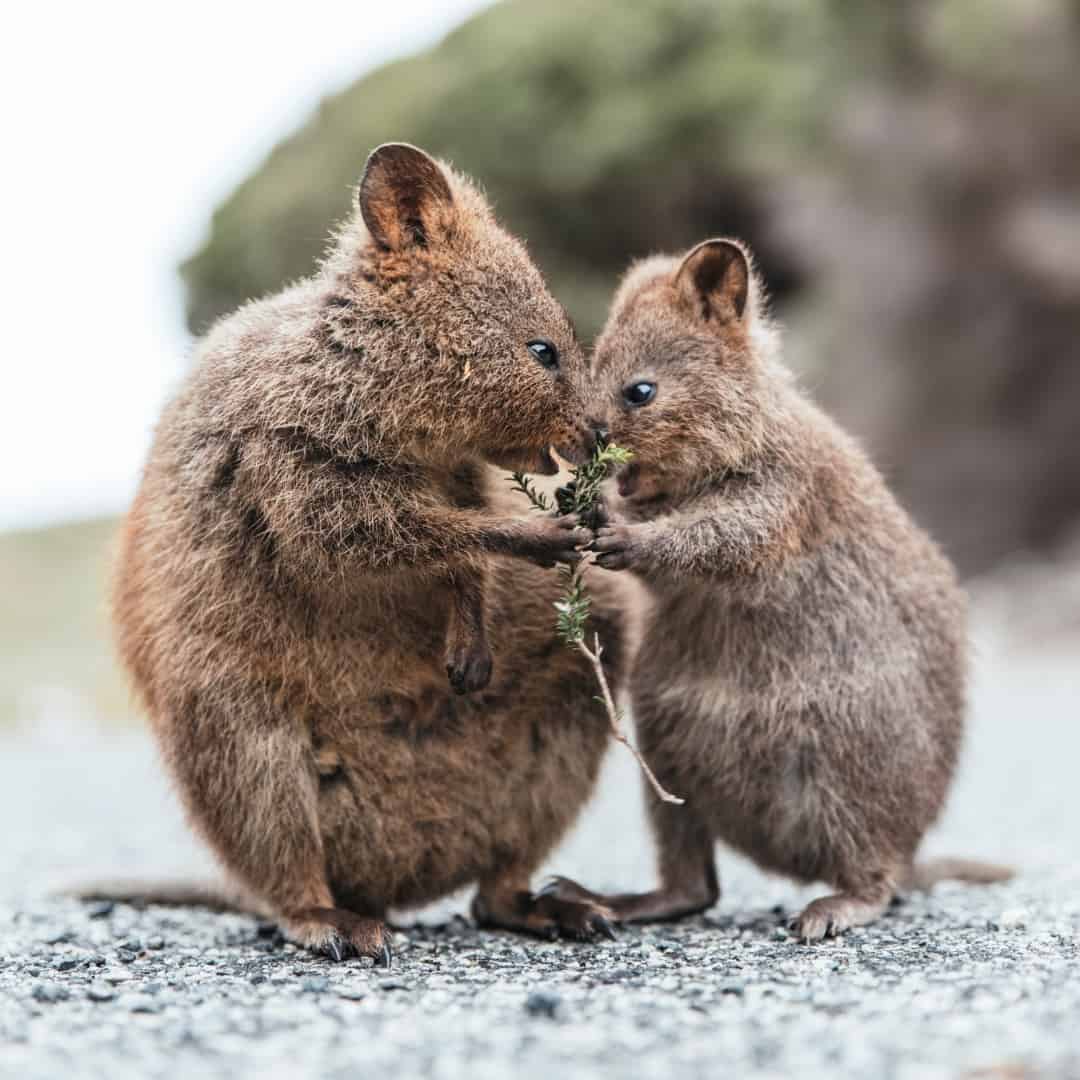
Australia – Geography Facts
- Australia is home to 150 volcanoes, yet none of them has erupted in 5,000 years. They are all extinct or dormant, thank goodness!
- Uluru is the largest single chunk of rock in Australia and indeed the largest monolith, or more strictly inselberg meaning island mountain, in the world. Mount Augustus in Western Australia is often said to be the world’s largest monolith but this is incorrect, it is in fact the world’s largest monocline which is a fold in rock strata.
- Uluru is 348m tall, higher than the Eiffel tower which is 324m tall, the Great Pyramids at 139m tall and the Statue of Liberty at 93m tall.
- The Great Barrier Reef in Queensland is the largest coral reef system coral in the world with 900 island, 2,900 coral reefs and a total area of 348,000 square kilometres.
- Australia has the world’s 9th largest road network with 356,000km of paved road and over 466,000km of unpaved road. Highway 1 is a network of roads which runs around the coastline of Australia, at 14,500km it is the world’s longest national highway.
- Ningaloo Reef is home to over 450 different species of marine life and 250 species of coral.
- Despite being surrounded by water, almost one-fifth of Australia is considered a desert whilst 70% is classified as arid or semi-arid meaning it gets less than 500mm of rain annually.
- The distance from the most easterly point of Australia to the most westerly is 4,000km. From the most northerly point to the most southerly point in Tasmania the distance is 3860km. It’s a big country!
- There are ten deserts in Australia and the largest is the Great Victorian Desert.
- The peak of Mount Kosciuszko is the highest point in Australia at 2,228 metres (7,310 feet) above sea level. Kosciuszko’s mean monthly temperature is often below freezing for eight months of the year. NB There are higher mountains in the Australian Antarctic Territory and also on remote Heard Island, but these are not part of the Australian continent.
- The largest cattle station in Australia is Anna Creek Station in South Australia. At 23,000 square kilometres, it is larger than Israel.
- The longest river in Australia is the Murray River which runs for 2,508 kilometres (1,558 miles) through New South Wales, Victoria and South Australia.
- New South Wales is the most populated state with 31.8% of Australia’s population living there. Victoria is next with 25.8% then Queensland with 20.4% followed by Western Australia with 10.4% and South Australia with6.9%. Tasmania is the third least populated state with 2.7% followed by the Australian Capital Territory with 1.7%. The Northern Territory has just 1% of the Australian population. These figures are from the 2021 Census of Population.
- The population of Australia around the same size as a single city in China, Shanghai!
- The low humidity, low air pollution and lack of population (and therefore lights) make the Australian outback one of the best places in the world for stargazing.
- The cleanest air on earth is recorded in Tasmania. The air monitoring station at Cape Grim in north west Tasmania records the cleanest air in all the world, but only when the wind is blowing from the west across the Roaring Forties. Air from a northerly wind brings pollution from Melbourne.
- 85% of Australians live no further than 50 kilometres from the coast.
- Roughly 25% of Australians were born outside of Australia.
- Once, Tasmania was part of Australia’s mainland. 12,000 years ago, when the ice age ended, ocean levels rose and drowned the landbridge.
- There are over 300 mines in Australia mining minerals such as coal, zinc, silver, and gold.
- Australia and Antartica are the only continents wholly located in the southern hemisphere.
- As a land of extremes, the highest temperature recorded was 50.7 degrees Celsius and the lowest recorded was minus 23 degrees Celsius.
- The Australian Alps is the only area on the Australian mainland that receives deep snow every year.
- There are more than 10,000 beaches along the coastline of Australia which stretches for an amazing 34,000 km (21,000 miles) if you exclude the smaller offshore islands. The most famous beach of them all is Bondi Beach which is just one km long.
Australia’s Amazing Places
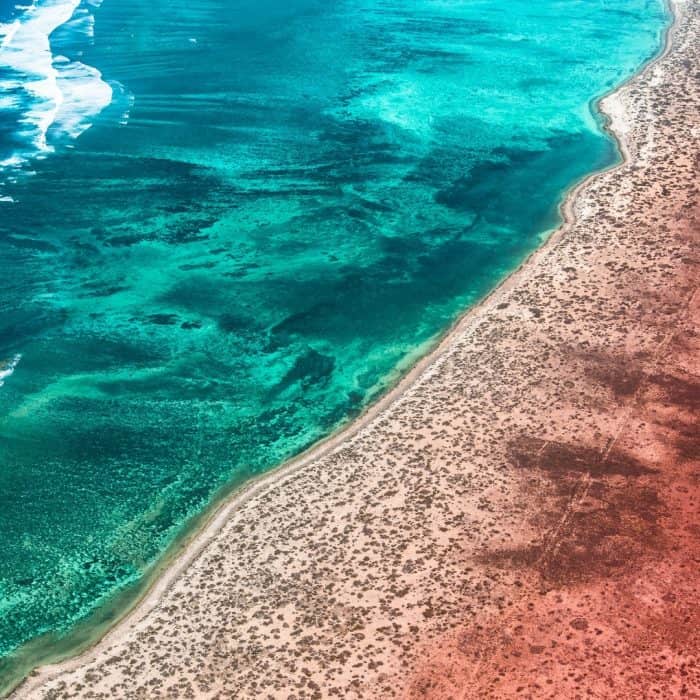
- Ningaloo Reef is home to whale sharks, pelagic fish like tuna and billfish, humpback whales, dolphins, manta rays, dugong, and turtles such as green, loggerhead, and hawksbill turtles.
- Ningaloo Reef gets its name from the Aboriginal Wajarri language word Ningaloo meaning deep water or high land jutting into the sea.
- The Nullabor Plain is the world’s largest single piece of limestone bedrock, a staggering 200,000 square kilometres. At its widest point, it runs for it is 1,100 km (684 miles). The name comes from the Latin nullus arbor meaning ‘no trees.’
- The world’s longest stretch of completely straight railway is found on the Nullabor Plain and runs for 480 kilometres.
- The Great Southern Reef is a series of golden kelp forest reefs that extend around 8,000 km of Australia’s southern coastline, covering a total area of 71,000 square kilometres. 70% of Australians live within the interconnected network of reefs that make up the Great Southern Reef yet a lot of them do not know very much about it.
- The Pinnacles Desert within Nambung National Park in Western Australia has hundreds of limestone pillars rising from the desert sand. Many look like gravestones and the tallest are 3.5 metres high.
- Perth in Western Australia is one of the most isolated cities in the world. The closest Australian city is Adelaide which is 2,200 kilometres away.
- The Gold Coast’s canal system is so large, it’s bigger than Venice and Amsterdam combined.
- Lake Eyre in the southern outback is the lowest point in Australia and is 15m below sea level.
- Fraser Island, also known by its aboriginal name K’gari, lies off the Queensland coast and is the largest sand island in the world.
- Australia’s Mount Disappointment is so named because the British colonial explorers who first climbed it, Hume and Hovell, believed the view was seriously disappointing.
- The Great Ocean Road is the largest war memorial in the world. This 243 kilometre road was built between 1919 and 1932 by soldiers who had survived the First World War and returned home. The Memorial Arch at Eastern View marks the start of the Great Ocean Road and commemorates the returned servicemen who laboured to built it.
- Lark Quarry in the outback of Australia has the only fossilised remains of a dinosaur stampede in the world. There are hundreds of dinosaur footprints fossilised in the rock and they are around 95 million years old. The Dinosaur Stampede National Monument at Lark Quarry Conservation Park is in outback Queensland.
- Lady Elliot Island in the Great Barrier Reef is kept together by three things – dead coral, tree roots, and guano. You guessed it – guano is bird poo!
- The Blue Mountains get its name from the blue haze you can see around it from the plains below. This blue haze is caused by oily droplets evaporating from eucalyptus leaves and mixing with water vapour and dust. These scatter short wavelength light rays which are mainly blue in colour.
- Kati Thanda-Lake Eyre in the Flinders Ranges of South Australia is Australia’s biggest salt lake measuring 144 kilometres by 77 kilometres and covering 9,500 square kilometres. When rain fills the lake it become home to thousands of birds and fish. But it is spectacular to visit at any time of year.
- Canberra became Australia’s capital to resolve disputes between Sydney and Melbourne which both wanted to be the country’s administrative centre.
- Western Australia has a pink lake. It’s incredible and is called Lake Hillier.
- Australia has more 20 World Heritage sites, they are:
- Great Barrier Reef
- Kakadu National Park
- Willandra Lakes Region
- Lord Howe Island Group
- Tasmanian Wilderness
- Gondwana Rainforests of Australia 2
- Uluru-Kata Tjuta National Park 3
- Wet Tropics of Queensland
- Shark Bay, Western Australia
- K’gari (Fraser Island)
- Australian Fossil Mammal Sites (Riversleigh / Naracoorte)
- Heard and McDonald Islands
- Macquarie Island
- Greater Blue Mountains Area
- Purnululu National Park
- Royal Exhibition Building and Carlton Gardens
- Sydney Opera House
- Australian Convict Sites
- Ningaloo Coast
- Budj Bim Cultural Landscape
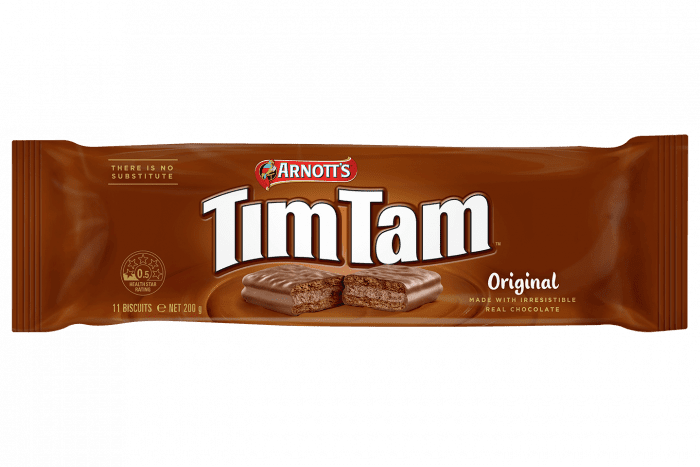
Australian Cakes, Biscuits and Chocolate Facts
- The humble Anzac biscuits is beloved by Australians and its origins have been written about in a book called Anzac Biscuits: The Power and Spirit of an Everyday National Icon written by historian Allison Reynolds. Hardtack biscuits were made of oats, flour and syrup and were used by Australian soldiers for many years as a basic ration. Tins of these were sent to Australian soldiers at Gallipolli and afterwards were known as Anzac biscuits.
- The oldest Australian chocolate bar is the Cherry Ripe which was first created in 1924 by the Australian confectioner MacRobertsons and later sold to Cadburys.
- Have you ever wondered who invented Australia’s famous Aeroplane Jelly? It was Sydney tram driver Bert Appleroth who began making jelly crystals in his bathtub in 1927!
- One of Australia’s favourite sweet treats is the lamington, a cube of sponge cake rolled in melted chocolate and then in coconut. Delicious! There is much discussion of the origins of the lamington, in fact, a book has been written about this called ‘The Lamington Enigma: a survey of the evidence,’ written by Professor Maurice French. There is agreement that they were named after Lord Lamington the Governor of Queensland from 1896 to 1901, or perhaps after his wife Lady Lamington. Perhaps it was the Lady who named them as Lord Lamington is reputed to have described this treat as ‘bloody, poofy woolly biscuits.’ Woolly they are, but a biscuit, never!
- Did you know that George is the name of the Caramello Koala?
- There is much debate between New Zealand and Australia about who created the meringue dessert called the pavlova. Both countries claim it was named after Russian ballerina Anna Pavlova.
- When Freddo Frogs were invented at MacRobertson’s chocolate factory in Fitzroy, Melbourne in 1930, Australians went so crazy over them that people were jailed for stealing Freddo Frogs. The original Freddos were shaped more like real frogs than the cartoon-like character we know today. The creators of Freddo Frogs initially considered creating chocolate mice instead of frogs.
- Violet Crumbles were given that name as the inventor’s wife adored violet flowers.
- Tim Tams are a popular Australian biscuit, approximately 35 million packets are sold annually. That means every person in Australia eats 1.7 packets of Tim Tams each year!
Australian Food Facts
- Australia’s delicious Chiko roll was invented by Frank McEnroe in 1951. He originally called it a Chicken Roll even though there was no chicken in it. The shape was based on the Chinese spring roll, and the filling is vegetarian.
- Do you know what Australians put on their hamburgers that other countries don’t? Beetroot!
- What is the food that all Australian adore but everyone in the rest of the world does not? It’s Vegemite! Vegemite which was first created in 1923 in Melbourne using the leftover yeast from making beer. By 1928, Vegemite was not selling well and it was renamed ‘Parwill.’ The aim was to outsell Marmite with a slogan of ‘Ma might, but Parwill.’ It didn’t work. And so, in 1935, they went back to Vegemite.
- Australians must love fish fingers as the amount sold in Australia each year could cover Tasmania.
- Australians consume chicken above all other meats and poultry. It averages to 47 kg per person per year.
- It is estimated that Australians eat over 270 million meat pies annually.
- 60% of food produced in Australia is exported and feeds a massive 40 million people around the world each day.
- On average, each Australian farmer produces enough food each year to feed 600 people for that whole year.
- Australia is the fourth largest exporter of wine globally, totalling 760 million litres of wine that is shipped overseas each year.

Indigenous Australia
- Many Australian words are derived from Aboriginal languages such as yabber, wallaby, kangaroo, kookaburra, and wonga.
- There are 250 distinct Aboriginal language groups throughout Australia.
- Moomba is the name of an annual festival held in Melbourne. In some Aboriginal languages, it means ‘up your bum.’
- Boomerangs were not invented by indigenous Australians but have been found in several other areas of the world throughout history. However, the name is from an indigenous Australian word. The first recorded writing about boomerangs in Australia was made by Francis Louis Barrallier, a French-born ensign in the New South Wales Corps who wrote in his journal on 12th November 1802: ‘The natives of this part of the country make use of a weapon which is not employed by, and is even unknown to, the natives of Sydney. It is composed of a piece of wood in the form of a half circle which they make as sharp as a sabre on both edges and pointed at each end. They throw it on the ground or in the air, making it revolve on itself, and with such velocity that one cannot see it returning towards the ground; only the whizzing of it is heard. When they throw it along the ground it is exactly like a cannon-ball, knocking down everything in its passage.’
- Aboriginal and Torres Strait Islanders make up roughly 3.3 per cent of the Australian population.
- Many of Australian’s Indigenous nations played ball games, often using a furry ball made of possum skins. The Wurundjeri people played a game called marngrook which seems to involve a high kick now seen in Australian Rules football.
Amazing Australian Plant Facts
- The Mountain Ash tree (Eucalyptus regnans) found in Tasmania and Victoria is the tallest hardwood tree in Australia and the tallest flowering plant in the world. It can reach heights up to 114 metres tall (375 feet).
- There is a Napoleon Pear tree in a garden in Hobart which is more than 120 years old and continues to produce 1.5 tonnes of fruit annually.
- Tasmania is home to one of the oldest plants in the world, King’s Holly (Lomatia tasmanica), believed to be at least 43,000 years old,.
- In the wet tropics of the Queensland rainforests, you can find the highest concentration of primitive flowering plant families in the world.
- The second tallest tree in the world, the Huon pine, grows in the rainforests of southwest Tasmania.
- The Australia Eucalypt or gum tree has over 500 species and is the toughest hardwood in the world.
- Granny Smith apples originated in Sydney in 1868 in the orchard of Maria Smith in Ryde who saw the genetic mutation of a crab apple grow as a seedling and cultivated it.
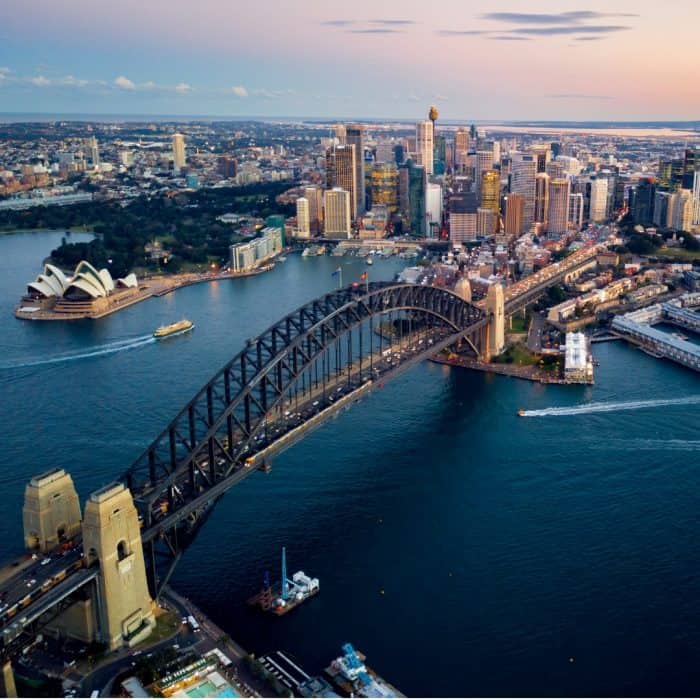
Sydney Fun Facts
- Did you know that locals call the Sydney Harbour Bridge ‘The Coathanger?’
- It took 272,000 litres of paint to paint the Sydney Harbour Bridge before it opened on the 19th March 1932. Nowadays it takes 30,000 litres of paint to touch up and repaint all the paintwork.
- Sydney Harbour Bridge took 1,400 labourers to build over eight years.
- The four huge granite-faced pylons at each end of Sydney Harbour Bridge don’t support the bridge. They are there for aesthetic reasons only.
- The original estimate to build the Sydney Opera House was $7 million. It cost $102 million.
- Where Sydney Opera House now stands is called Bennelong Point after the Aboriginal man Woollarawarre Bennelong who was kidnapped by Governor Phillip when colonists first arrived in 1788. The original Indigenous name was Tubowghule, though early colonists named it Limeburners Point
Melbourne Fun Facts
- Melbourne has the largest Greek-speaking population of any city outside Greece and Cyprus.
- If Melbourne had stuck to its original name, you could have told people you lived in the city of Batmania. Imagine how cool that would be!
Amazing Facts About Australia
Inventions
- Australia invented the world’s first waterproof polymer banknotes in 1988. They are both long lasting and hygienic as they are resistant to dirt and moisture.
- Australians invented notepads, dual-flushing toilets, the pacemaker, the cochlear implant, spray-on skin for burns patients, black box flight recorders, baby safety car capsules and the Hills hoist rotary clothes hoist.
Politics
- Australia was the second country in the world to give women the right to vote in 1902. South Australian women had been able to vote in state elections since 1894.
- Only in Australia will you find a politician referencing the iconic Iced Vovo biscuit in an election victory speech. Prime Minister Kevin Rudd mentioned this beloved Australian biscuit in his speech on the night of 24th November 2007. Iced Vovo sales spiked!
- Back in 2005, Australia’s federal Parliament in Canberra banned security guards from calling people ‘mate.’ It lasted one day.
History
- The first ever Australian police force was a group of 12 of the most well-behaved convicts known as The Night Watch and then as the Sydney Foot Police.
- The bearded bushranger, Ned Kelly, has had more biographies written about him than any other Australian.
- Around 80% of the 162,000 convicts shipped to Australia between 1788 and 1868 were thieves. On the First Fleet John Russel had stolen one copper saucepan and a checked apron, Robert Scattergood had stolen two live geese and Margaret Darnell had stolen one dozen dessert knives and forks.
Final Funny Facts of Australia
- Did you know there is a Boomerang Association of Australia? Other countries have boomerang associations too and a World Boomerang Championship is held in a different country every two years.
- Swimming is very popular at Australian beaches, but things did not start that way. Between 1838 and 1902 in Sydney it was forbidden to swim between 6am and 8pm, which is a shame as sharks feed at dawn and dusk so the hours in the midst of the day are the safest for swimming.
- Many deserts in Australia have thunderstorms. However, given the heat, they are often dry storms and the rainfall evaporates before it hits the ground.
- Have you heard about drop bears? You have been conned! Drop bears are a mythical creature reported to be large hairy mammals which drop out of trees and kill people. They must be closely related to the wild Scottish haggis! This urban myth was created to scare and trick American soldiers posted to Australia during World War 2 and the Vietnam War.
- Do you know the meaning behind the words of the song title Waltzing Matilda? Waltzing is slang for travelling on foot and a Matilda is slang is a swag, meaning a rolled blanket that swagmen carried and slept in.
- Before finding fame as an actor, Paul Hogan from Crocodile Dundee worked as a painter on the Sydney Harbour Bridge.
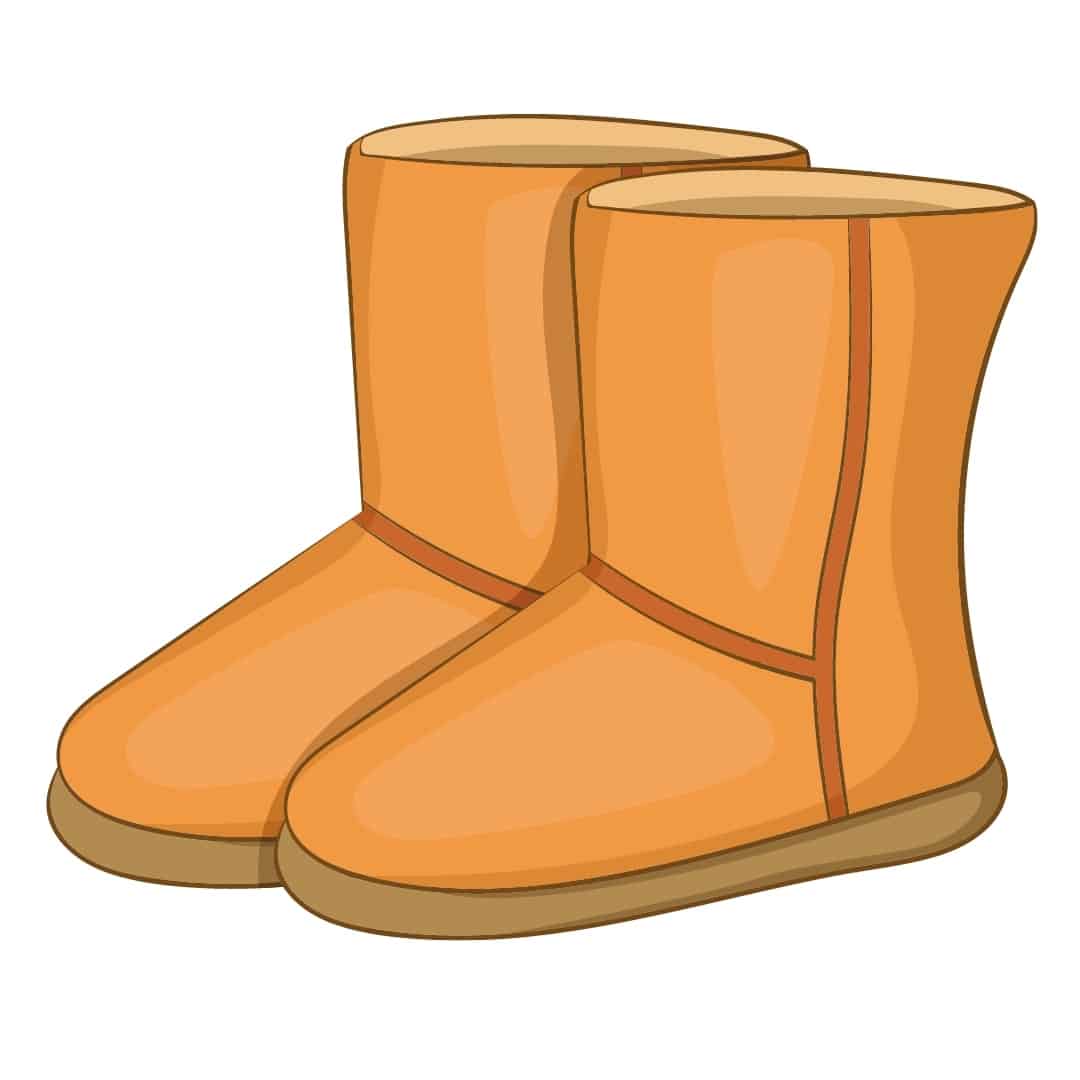
- Ugg boots, made from sheepskin, originated in Australia and became popular in the 1960s when surf champions wore them to keep their feet warm when waiting on the beach. Ugg is a generic name for sheepskin boots and is not trademarked in Australia but UGG is trademarked in 100 other countries by the American company Deckers Brand.
- There is no official language in Australia although English is spoken as a first language in 80% of homes and is used as the primary language of government. The 2021 Census showed that over 400 languages are spoken in Australian of which over 160 are indigenous languages.
- The Australian 50-cent coin was once round like other coins.
I hope that you have enjoyed this article full of interesting and fun facts about Australia for kids!
Can you add any more to the list?
Funny facts of Australia – new book!
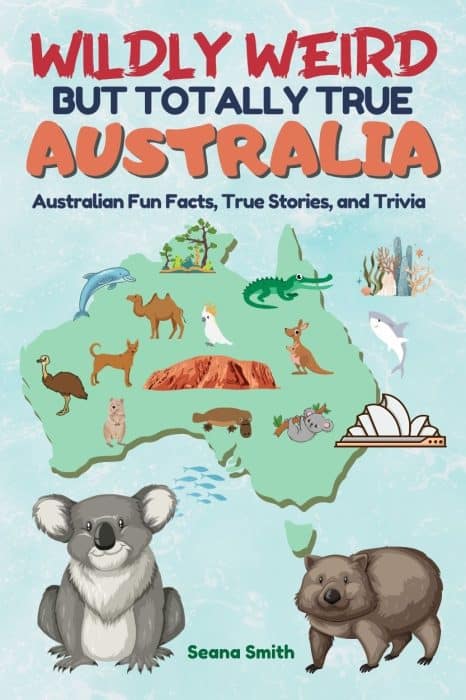
Click here to buy on Amazon in Australia!
Click here to buy on Amazon in the USA!
Click here to buy on Amazon in the UK!
To find even more fun facts about Australia visit the excellent website of the Australian Museum!
If you are planning a visit to Australia do join our Family Holiday Planning Australia Facebook group.
And you might like to read this article: Top 25 Things To Do In Sydney With Kids


